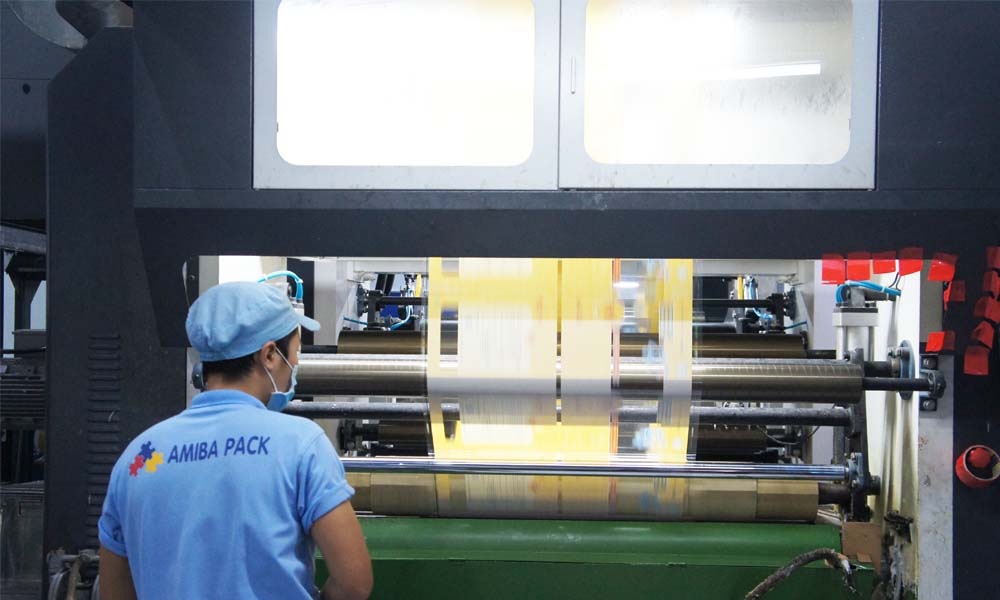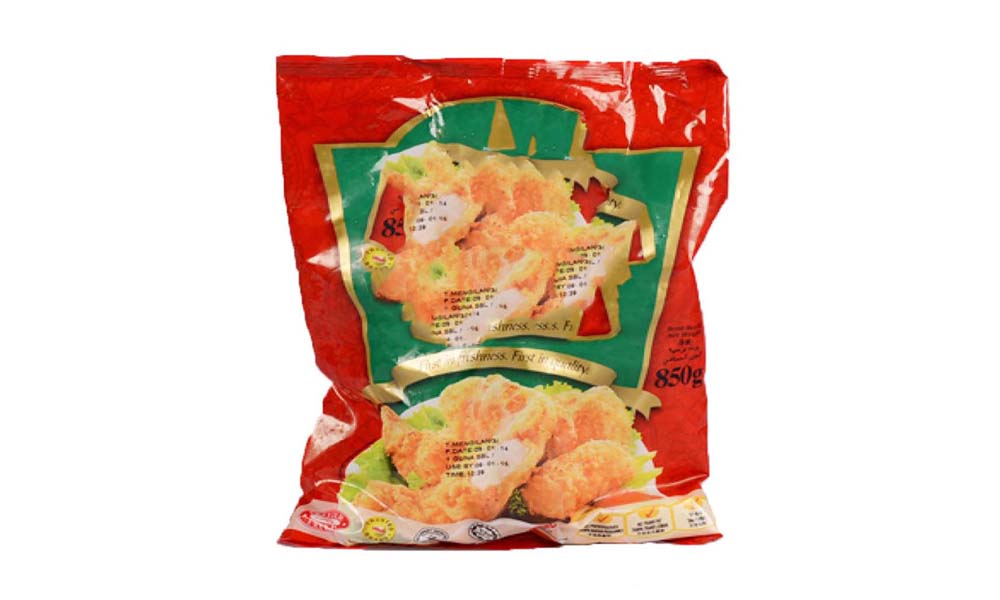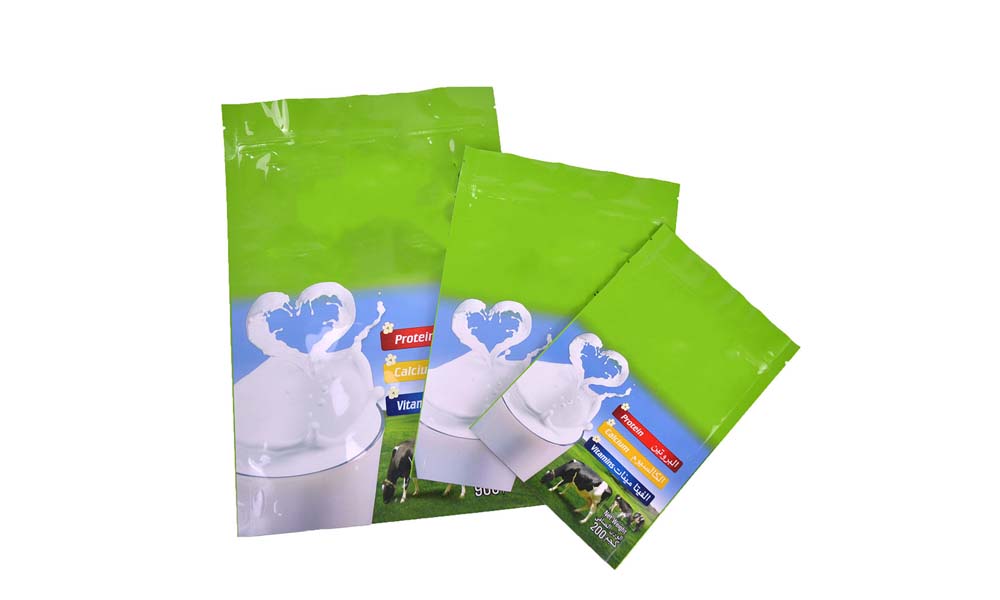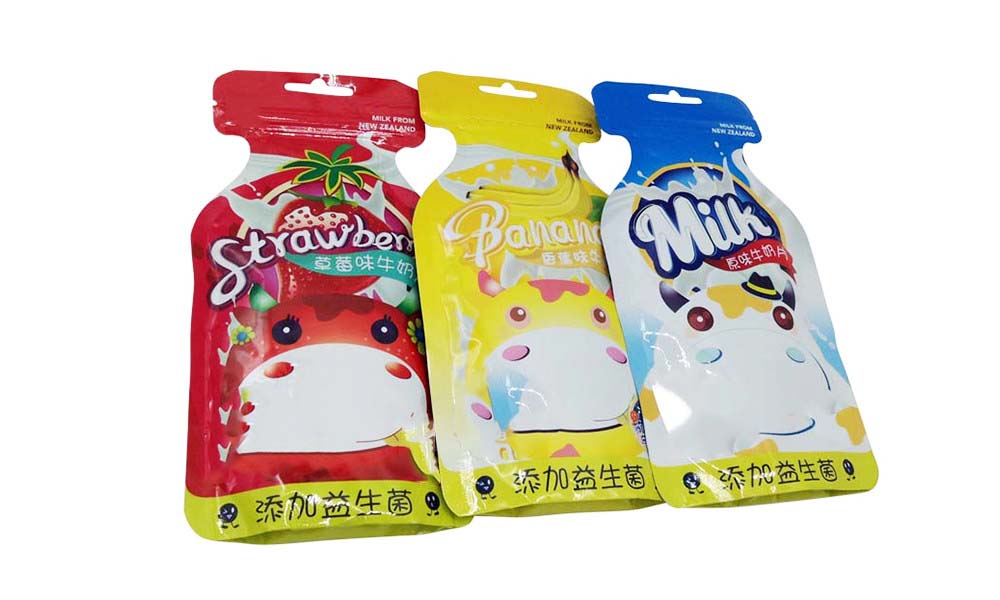Today, laminated film packaging is applied in many different fields. In these cases, a composite consisting of two or more layers of material may provide the desired performance. A particularly common means of creating such a composite is to laminate various polymeric films to other films, foils, papers, etc. with a polymeric adhesive.

This production solution is commonly employed in the packaging industry where the end products require multi-functional properties, such as high tensile strength and high gas permeability. These are generally referred to as barrier films. The laminate construction can become rather complicated due to the nature of the specific application. A typical laminate used in the medical packaging industry, for example, maybe a multi-layer composite containing films of polyester/polyethylene/metal foil/polyethylene.
1. Dry lamination in the production of laminated film packaging
What is laminating process?
Laminating is the process through which two or more flexible packaging webs are joined together using a bonding agent. The substrates making up the webs may consist of films, papers, or aluminum foils. In general terms, an adhesive is applied to the less absorbent substrate web, after which the second web is pressed against it to produce a duplex, or two-layer, laminate.

What is dry lamination?
Dry laminations are those in which the liquid adhesive is first dried before lamination. The adhesive can be either applied to one substrate and dried or it can be applied as a hot-melt type of film (essentially another film layer). The adhesive is then in the dry solid or slightly tacky stage when joined with the other substrate. The bonding is generally achieved during a high temperature, high-pressure nip. The temperature and pressure are sufficient to cause the adhesive to flow and create an instant bond when it cools and gels. Dry lamination can be applied to a broader range of products such as film-to-film and film-to-foil.
Dry laminating adhesives are generally solvent-based although considerable development has taken place to reduce or replace the solvent to meet environmental regulations.

2. Substrate Characteristics
The physical and chemical characteristics of the substrate itself will influence the choice of adhesive and coating method to be employed. The substrates that are used in the manufacture of flexible packaging fall into three main categories: papers, foils, and films. By far films are becoming the dominant material because of their lightweight, strength, disposal, and cost characteristics.
Common polymeric films that are used in flexible packaging are listed:
- High and low-density polyethylene
- Linear low-density polyethylene
- Cast and oriented polypropylene
- Ethylene-vinyl acetate
- Polyvinyl chloride
- Cellulose (plain and coated)
- Cast and oriented polyamide (nylon)
- Polyester
- Metalized film
- Coated (polyvinylidene chloride or acrylic) film

3. Applications
Web laminating is used to improve the appearance and barrier properties of substrates.
The choice of the most suitable web laminating process is mainly dictated by the end-use of the product. A number of different technologies are available that cover a wide variety of applications in the food and non-food packaging industries, as well as for the manufacture of technical laminates for the solar energy and insulation panel sectors.
Applications for food products include:
- Ready-to-eat such as snacks, ice creams, coffee
- Freezer-to-microwave
- Boil-in-bag pouches

Applications for non-food products include:
- Insulation
- Medical
- Cosmetics

Read more: Aluminum complex film packaging and what you need to know
4. Functions of Flexible Packaging Laminates:
Mechanical Properties:
- Improve the strength of the material by making it more resistant to tearing
- Protect it during packaging, distribution, and storage
Barrier Properties:
- Protect it from outside deteriorating agents (light, moisture, gas)
- Prevent the loss of product qualities, such as freshness and aroma (food)
Substrate Sealability:
Easily pack the laminated film tightly to protect the product inside, helping to extend the shelf life.

5. Why is Amiba company always the first choice?
- More than 30 years of experience in the plastic and complex film packaging industry
- Provide products with high quality
- Large production capacity
- Cost savings
- Large warehouse system, fast delivery
- Diverse payment policy
- Being a close partner of many large companies and large enterprises
- Staff dedicated to the job
- The production environment is safe for humans and the environment

Amiba company’s products are widely used by ensuring quality management, environmental protection, and integrated ISO standards:
– It has been assessed and certified to meet the requirements of Hazard Analysis and Critical Control Point (HACCP) Codex Alimentarius
– It has been assessed and certified to meet the requirements of Food Safety System Certification (FSSC) 22000
– It has been assessed and certified to meet the requirements of ISO 22000: 2018
– It has been assessed and certified to meet the requirements of ISO 9001: 2015
If you need to learn more about laminated film packaging, or need advice regarding placing an order or getting a price quotation, please call now +84 966 290 555 for the best support.
CONTACT US
Address: Lot 8, Street Number 16, Viet Nam-Singapore II-A Industrial Park, Tan Uyen Town, Binh Duong Province, Viet Nam.
Office Tower: 25 Ngo Quyen Street, Ward 10, District 5, Ho Chi Minh City
Tel: +84 966 290 555
Email: info@amibapack.com
Website: www.amibapack.com

 Tiếng Việt
Tiếng Việt 中文 (中国)
中文 (中国)
